Panier
Close
- No products in the cart.
Sous total (Hors frais de livraison)
0,00€
Payer
Expédition et livraison
Réparation et maintenance
Wingfoil is a gliding sport practiced on the water, with the help of the wind. It consists of an inflatable wing, a foil and a board. You’ll also need wing and board leashes, a neoprene wetsuit, a helmet and, for your own safety, an impact vest.
Unlike windsurfing and kitesurfing, the special feature of the wing foil is that it flies about 30cm above the water. Only the bottom of the foil is submerged. The glide is ultra-fluid and silent, with very little friction on the water: a real treat!
Thanks to the wind blowing into the wing, the board gradually gains speed, and the foil gradually lifts it out of the water. Experienced wingfoilers can fly from 10-12 knots. As for beginners, they need a stronger wind, around 16-20 knots, ideal for learning the magic of wing foiling.
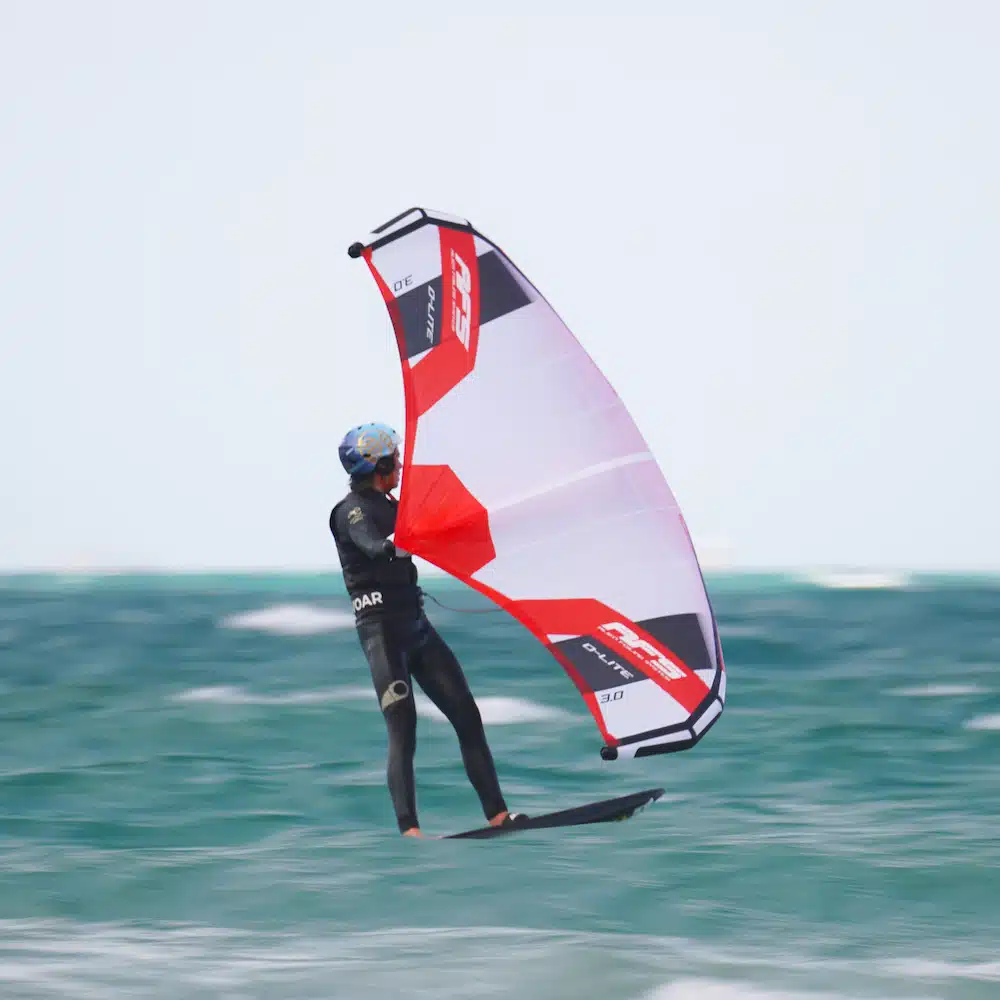
The kite is held directly by the rider’s hands using handles, or sometimes a boom. There are no masts as in windsurfing, nor lines as in kitesurfing. A leash, attached to the kite, will ensure you don’t lose it (a cord attached to the wrist so you don’t lose your kite). When it comes to choosing a comfort wing, the AFS D-LITE is the perfect choice for getting started in wingfoil. It’s a stable wing that’s easy to handle when you’re just starting out. In short, the AFS D-LITE combines exceptional handling, progressive power and impressive ease of use.
The board is obviously underfoot for stability. Its volume (measured in liters) and size (measured in feet) vary according to our weight and ability. Shape is not neglected either. A leash is also attached to the board, this time to the waist or ankle. Our AFS brand recommends two high-quality boards for beginners: the AFS Fly One and the AFS Fire.
And finally, the foil, which comprises the plate (attached to the board), the mast (made of carbon or aluminum) and the airplane (made of carbon and comprising the fuselage, front wing and stabilizer). This is what helps you fly and stabilizes you in the air, known as lift. Our recommendation for a first-timer is the AFS Flyer foil.
Today, wingfoil is developing spectacularly in many spots. The number of wingfoilers continues to multiply. Indeed, the pleasure it gives us is immense. And the rapid evolution of increasingly high-performance equipment is making this water sports activity more and more accessible. Even for those new to board sports. AFS foiling is at the cutting edge of technology when it comes to wingfoil initiation equipment. All testimonials are welcome, so that AFS equipment is within the reach of everyone, including beginners.
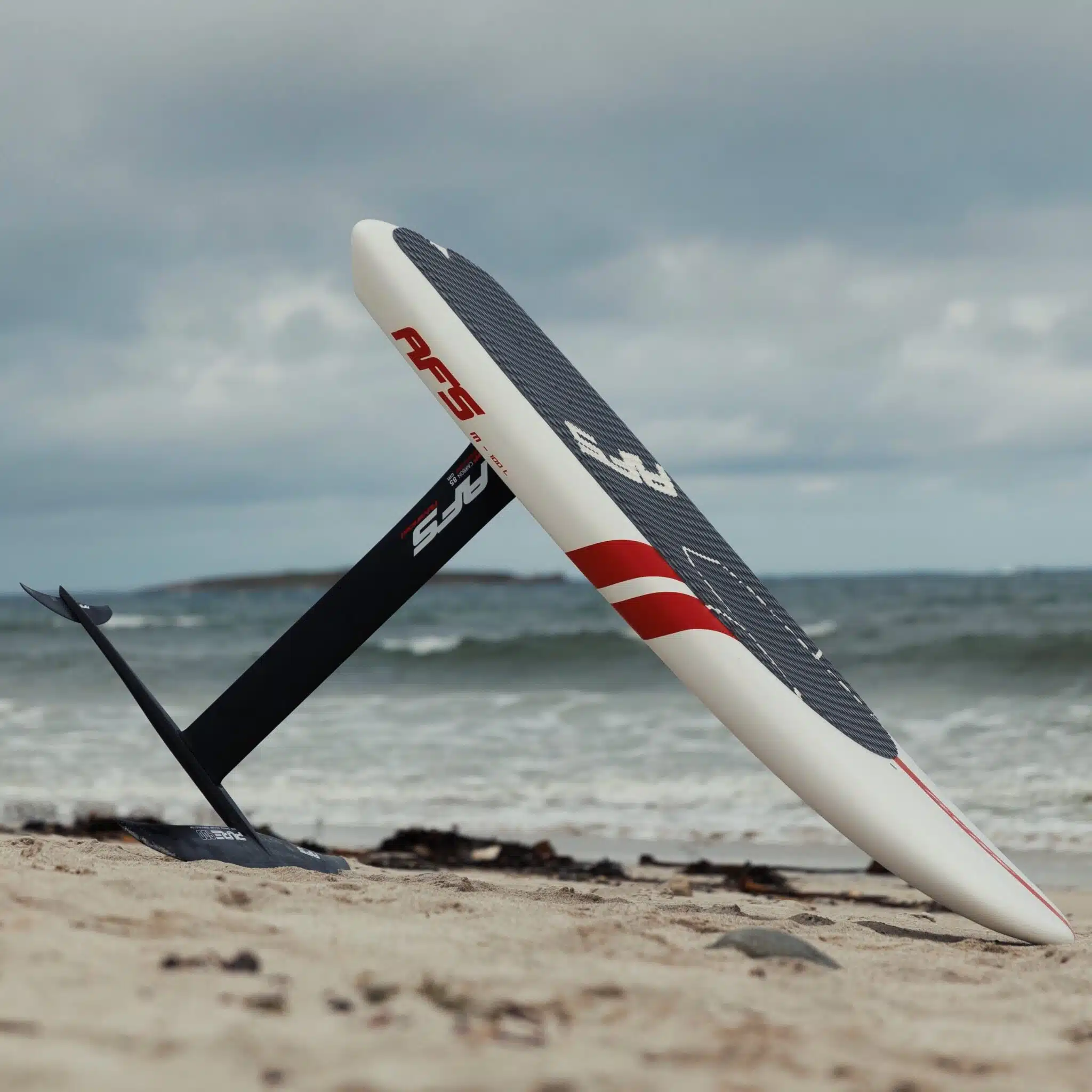
The choice of wingfoil is crucial for each of our outings on the water. And also for maximum comfort in the arms. It’s the wing that first generates speed, then propels us above the water’s surface, using the foil.
In most cases, a wing foil sail is made up of two inflatable bladders and a variety of sewn, waterproof fabrics. This includes the spinnaker cloth. The arcuate bladder is the leading edge, and gives the wing its shape. The middle bladder, which separates the two symmetrical windows, is called the central batten. And it’s on this flange that you’ll find the handles for holding the wing foil. They’re useful for controlling and steering the wing – it’s a bit like your rudder. Handles can be rigid, with a plastic coating, or soft, with a fabric coating. The latter are often recommended for beginners, to avoid bumps or horny hands.
Never forget to attach the leash to your wing, so that you don’t lose it in the event of a fall, and so that you can return to the starting point.
With the exception of sails sold in wing foil packs, the wing is not sold with a pump. So you’ll need to think about getting a suitable one.
The wing foil market offers a wide range of wing sizes. The great thing is that there’s something for everyone. No matter what your level, weight, size or biceps! Most wing foil sail surfaces are between 3 m² and 6 m². Smaller and larger sizes are also available. And you can try them out in our tests, before you invest.
Be careful in your choice: a wing that’s too small makes take-off difficult. Whereas a wing that’s too big is more complicated to maneuver and control.
4 m² is the ideal size for sailing in winds of 15 to 25 knots for those weighing no more than 75 kilos. For heavier sailors, opt for a 5 m² sail, or even a 6 m² sail for 100 kgs to be comfortable. When you’re first starting out in wing foiling, you’ll generally only have one wing. But it’s important to know where to sail. Some do it on the lake, others on the sea. Wing foiling can be practised in a region where the prevailing wind often blows strongly, or on the contrary in an area where the wind is very light. Or even unstable winds. So it’s essential to choose your wing foil carefully.
For more frequent practice, and depending on the conditions, we strongly recommend that you expand your quiver to two or even three wingfoils, so you don’t miss any sessions on your favorite spots. A 2-square-meter difference if you have two wings: e.g. 3 and 5 m² for a 75-kilo wingfoiler and 3 and 4 m² for a 55-kilo wingfoiler. Or 4 and 6 m² for someone weighing 90 kilos or more.
If you’re lucky enough to have three wings, take a square meter between each of them.
With new technologies, the materials used in wing foil sails are not all the same. At AFS foiling, for example, we use spinnaker cloth that is lightweight, strong and ultra-high-performance. This is the case with the D-LITE in our AFS range, perfect for beginners. And at a price you can afford on the wing foil market.
Don’t know where to get your first wingfoil tacks?
Ideally, you should learn to sail on water with a crosswind, very little chop and a sandy bottom, if you’re out at sea. The flatter the water, the easier it will be for you to stand up on your float and fly. Clearly, avoid waves!
On the other hand, choose an uncrowded spot if you can! This will allow you to concentrate on your learning without fear of collisions or being hindered by other people on the water, or any obstacles.
Let’s talk about wind strength! Between 16 and 22 knots, you’ll find it much easier to leave the surface of the water. Without tiring your arms, let alone pumping. And if you’re lucky enough to find an enclosed body of water (lake or pond) close to home, it’s even better to learn wing foiling, and avoid drifting out to sea.
The weight and surface area of a wing foil are extremely important for good sailing. Especially when you’re learning, as you spend a lot of time on your knees on the board. His arms are even more forced to hold the wing slightly above his head, just long enough for him to stand up. And this experience lasts a little longer than that of an experienced rider, making the choice of kite – in terms of construction and surface – all the more essential.
Saving energy before the take-off is important, especially if you’re going to be on the water for 2 hours. Once you’ve done this, all you have to do is glide and fly… And enjoy a simply exceptional glide!
As you can see, the first step to wingfoiling is to get the right glider for your level and weather conditions! The desire to progress will only increase with the right wingfoil equipment in your hands. So don’t hesitate to come and try out some AFS gear at one of our upcoming events. You’ll also get the best advice from our team.
And if you haven’t started learning wingfoil yet, there’s still time to visit a spot and take a course, as many sailing schools offer them.
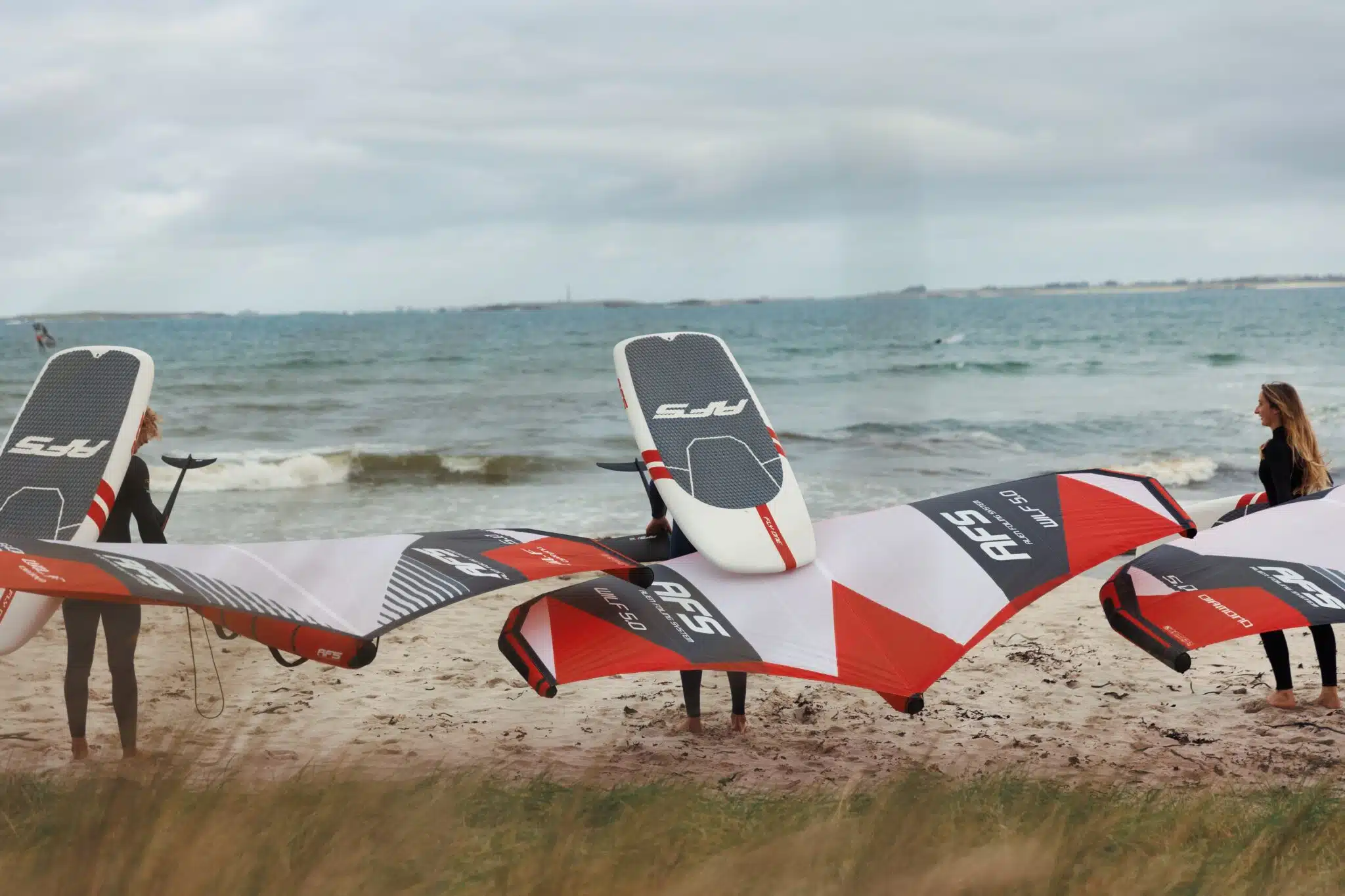
Click & Collect
Secure payment in 3 or 4 instalments
Advice from enthusiasts
Satisfied or your money back
2 to 3 years warranty
Worldwide delivery
Votre emplacement actuel et les langues disponibles
Your current location and available languages
Build your complete foil equipment according to your practice and objectives.
Answer a few quick questions and get a suggestion.
Compare up to three stabilizers side by side.
Coming soon...
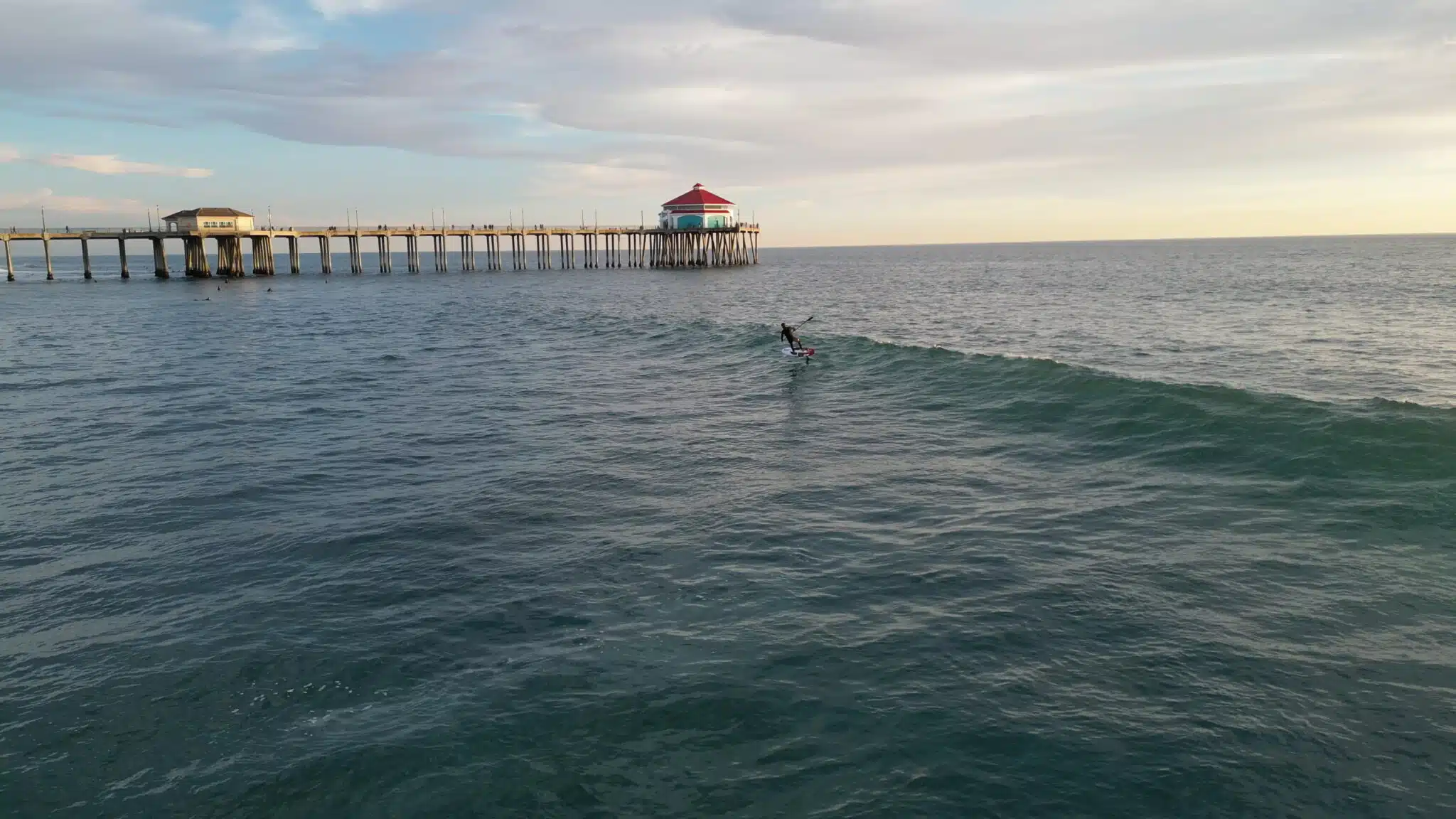
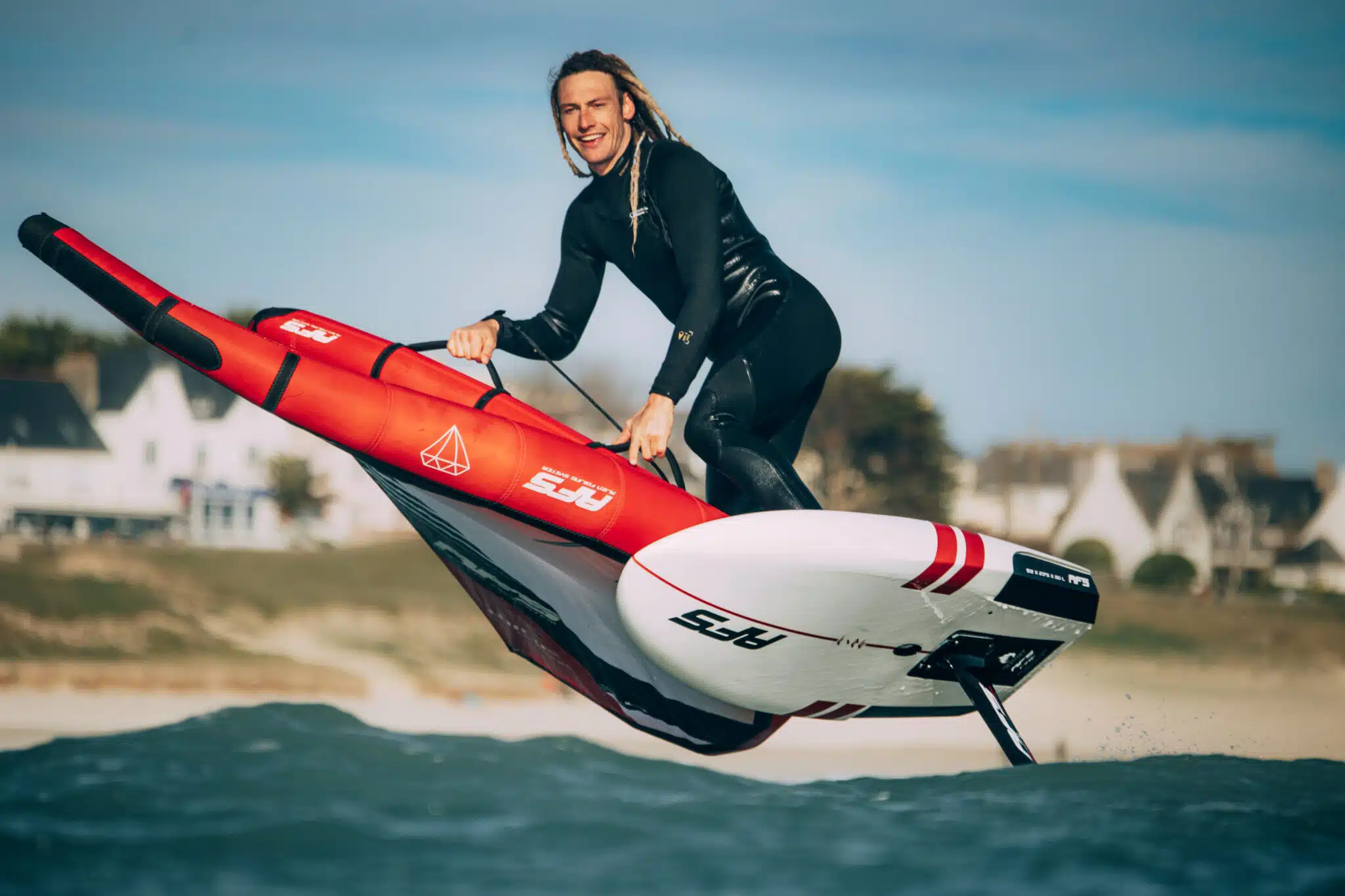

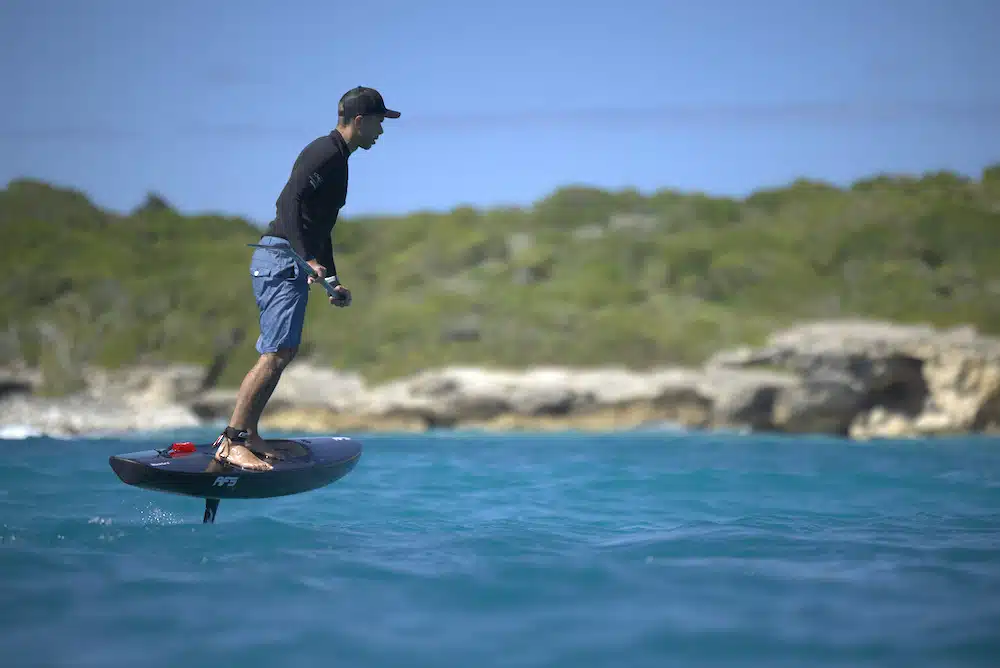
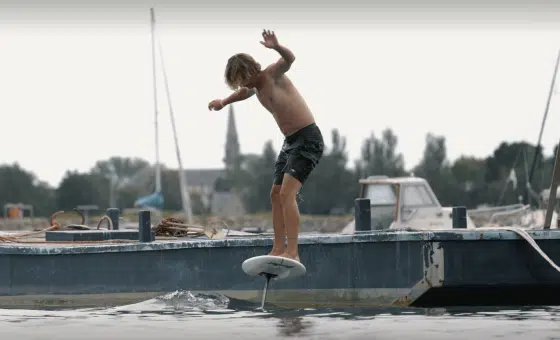
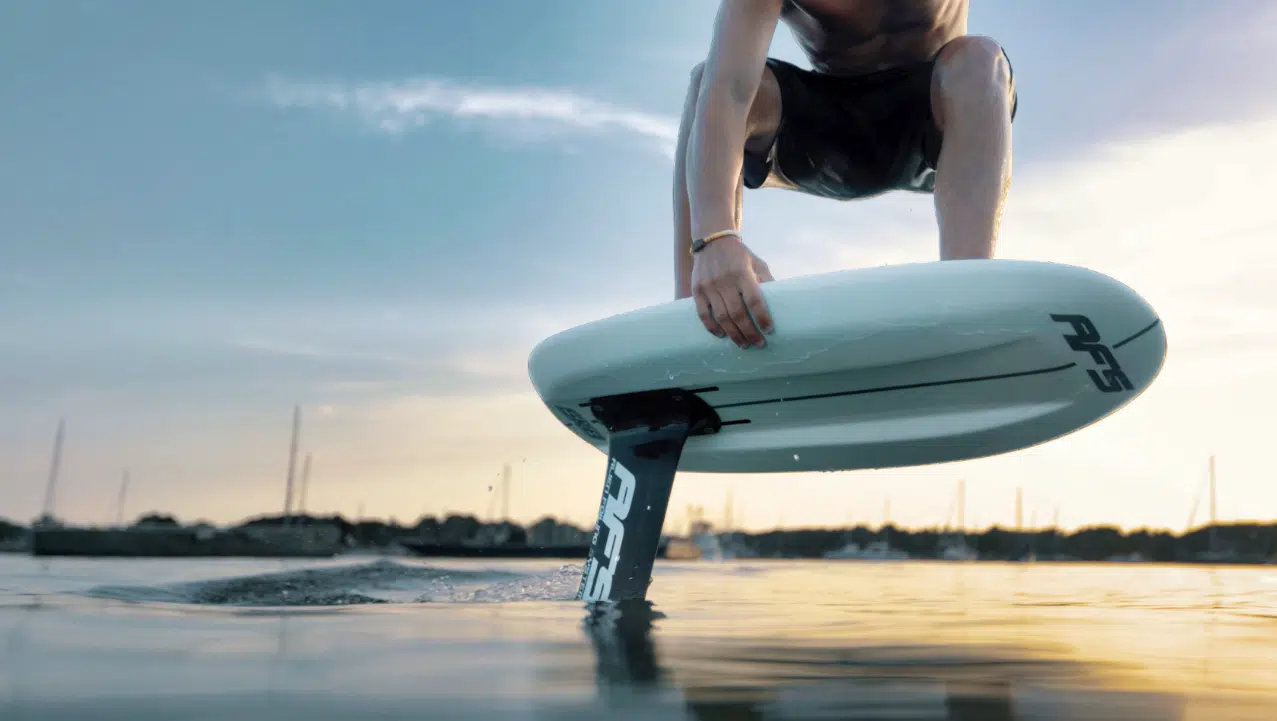
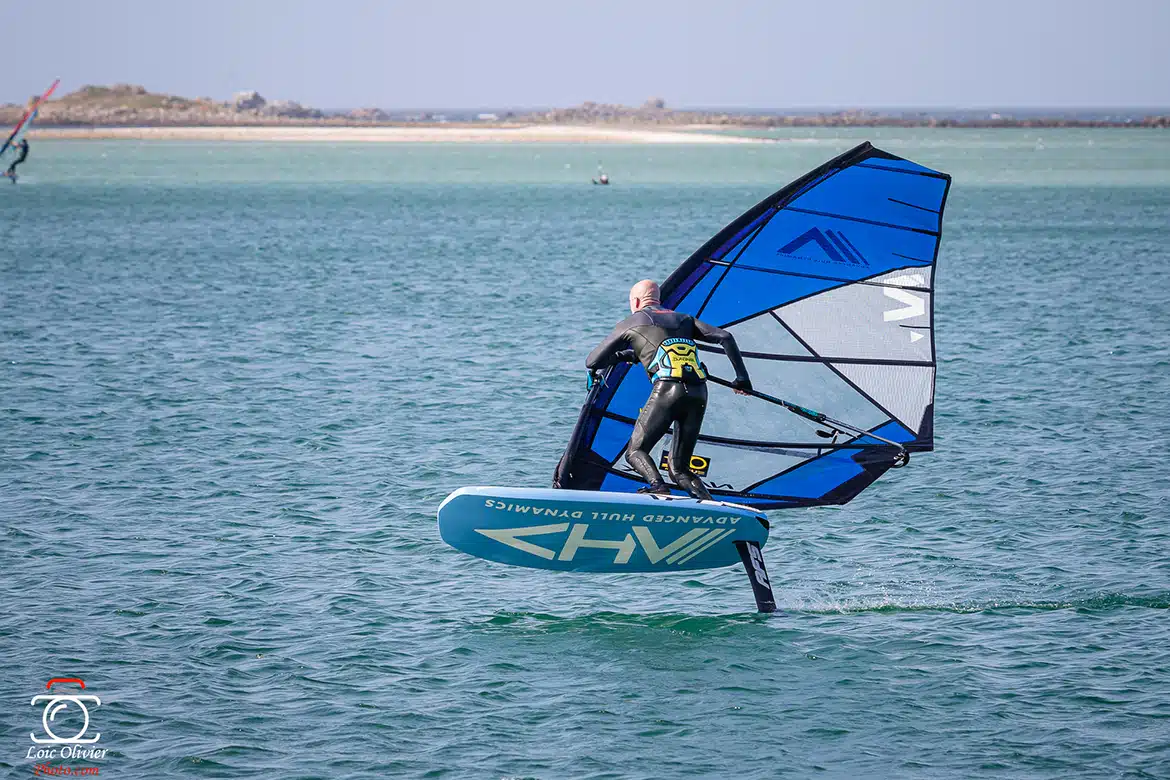
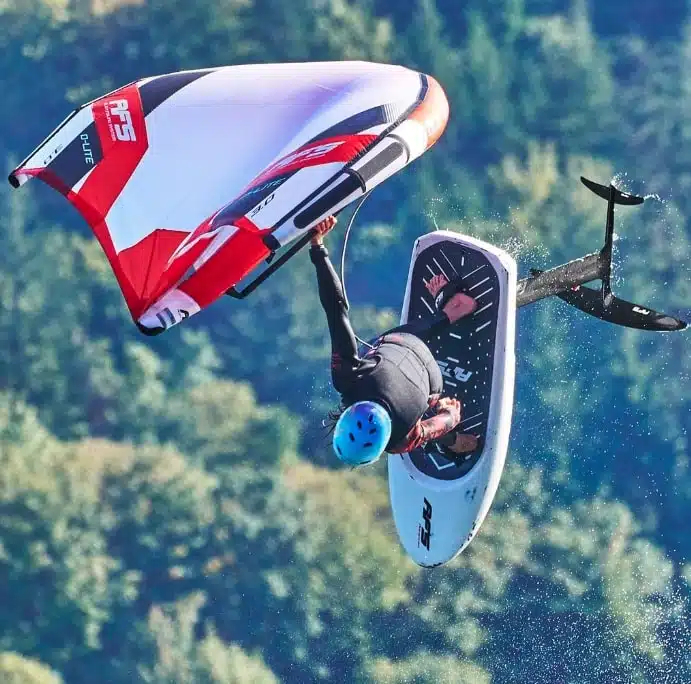
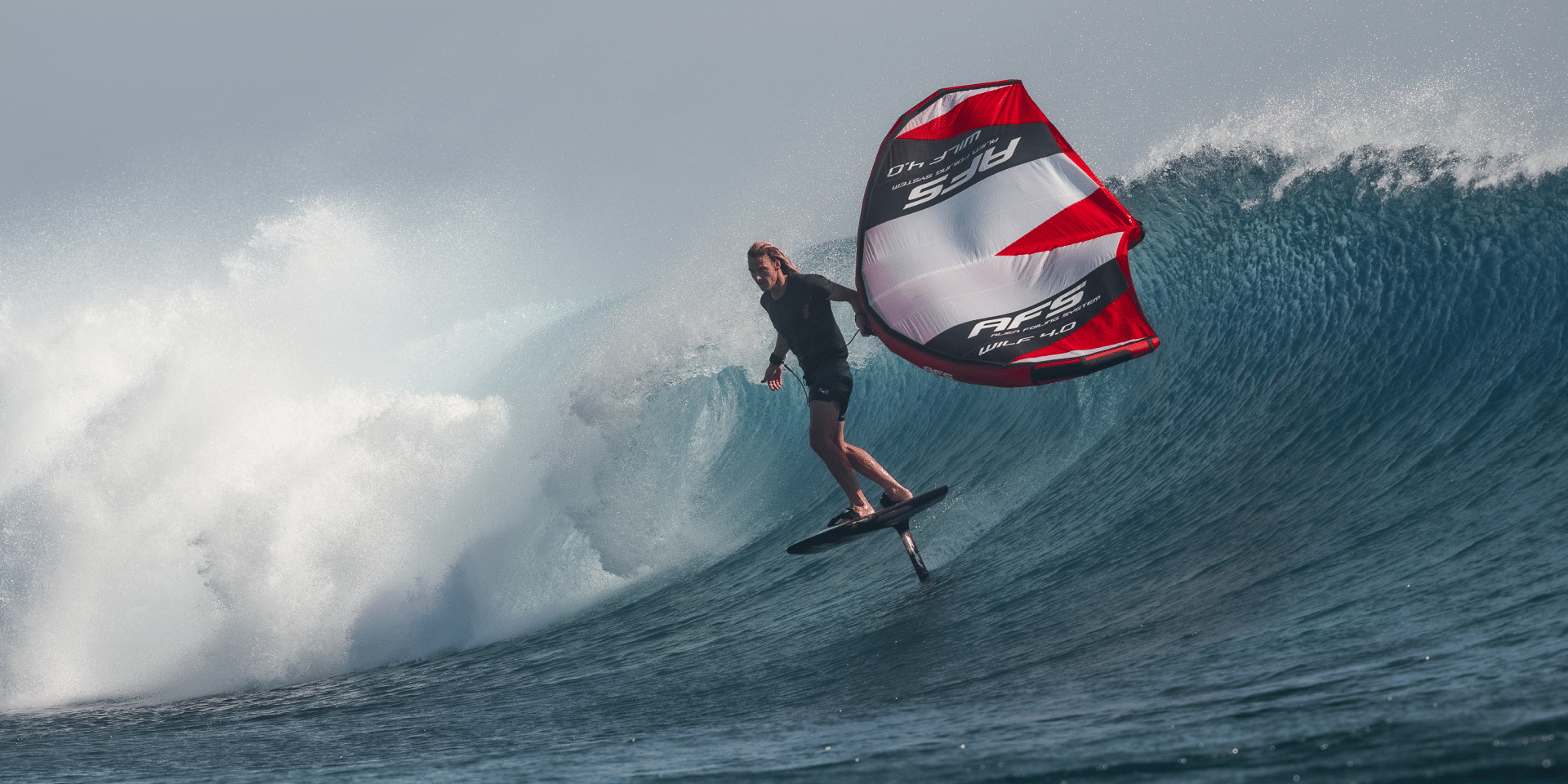
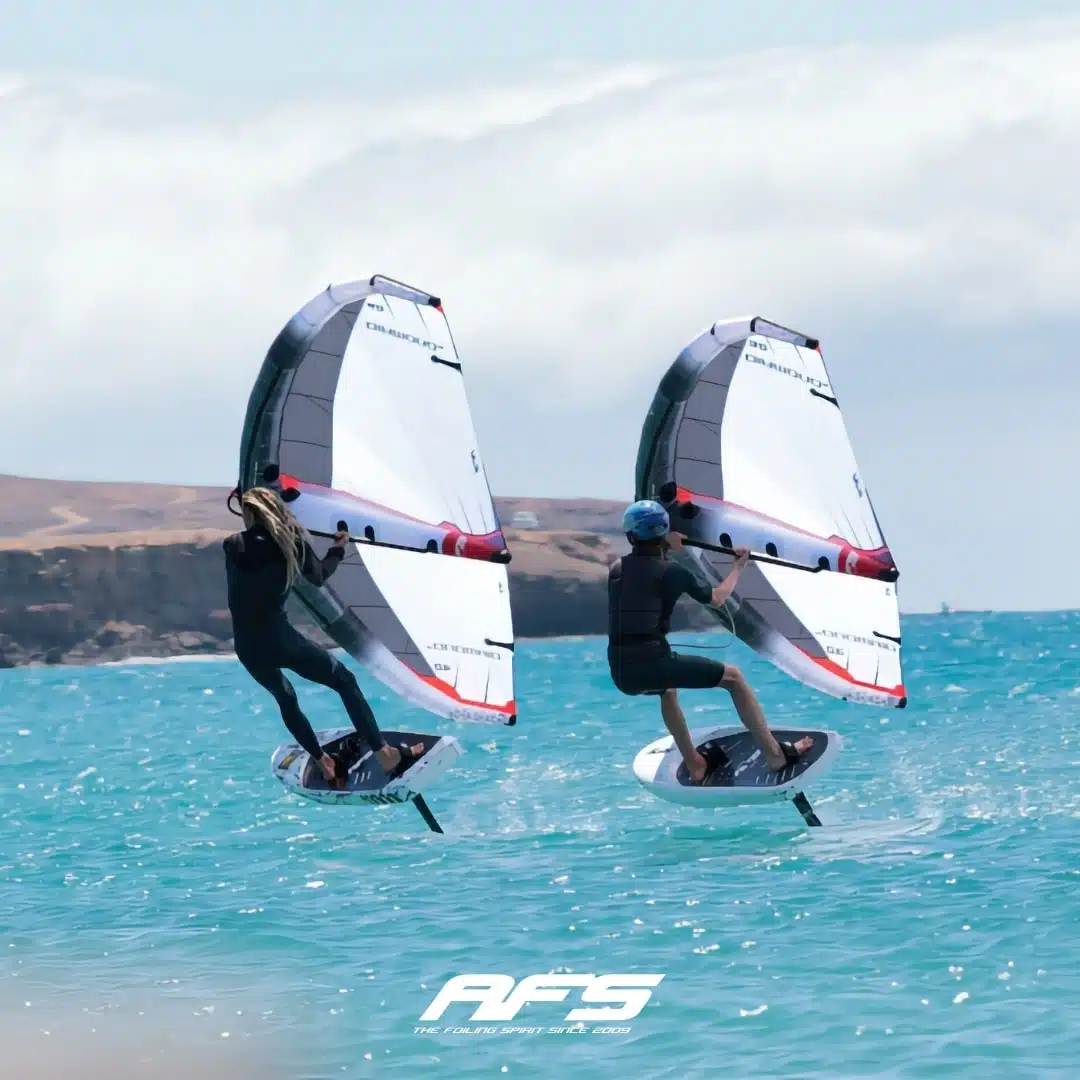
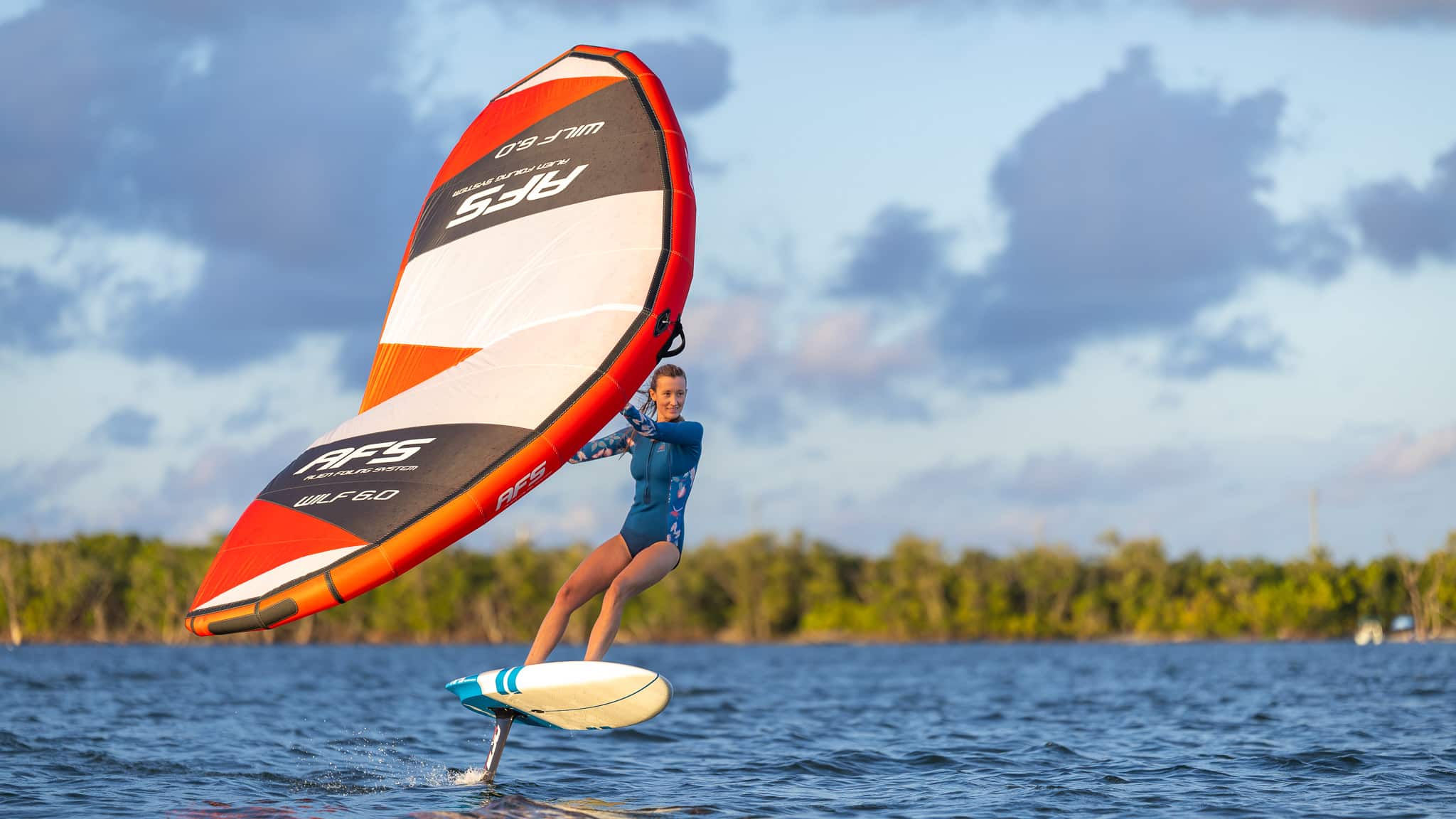

You will receive a product in excellent condition, with a few minor scratches from use.
Your product may have a few minor scratches or visual defects, but it's ready to take to the water again!
Despite deeper scratches or more pronounced visual defects, your product can take to the sea without hesitation: at this price, it's a shame to miss out!